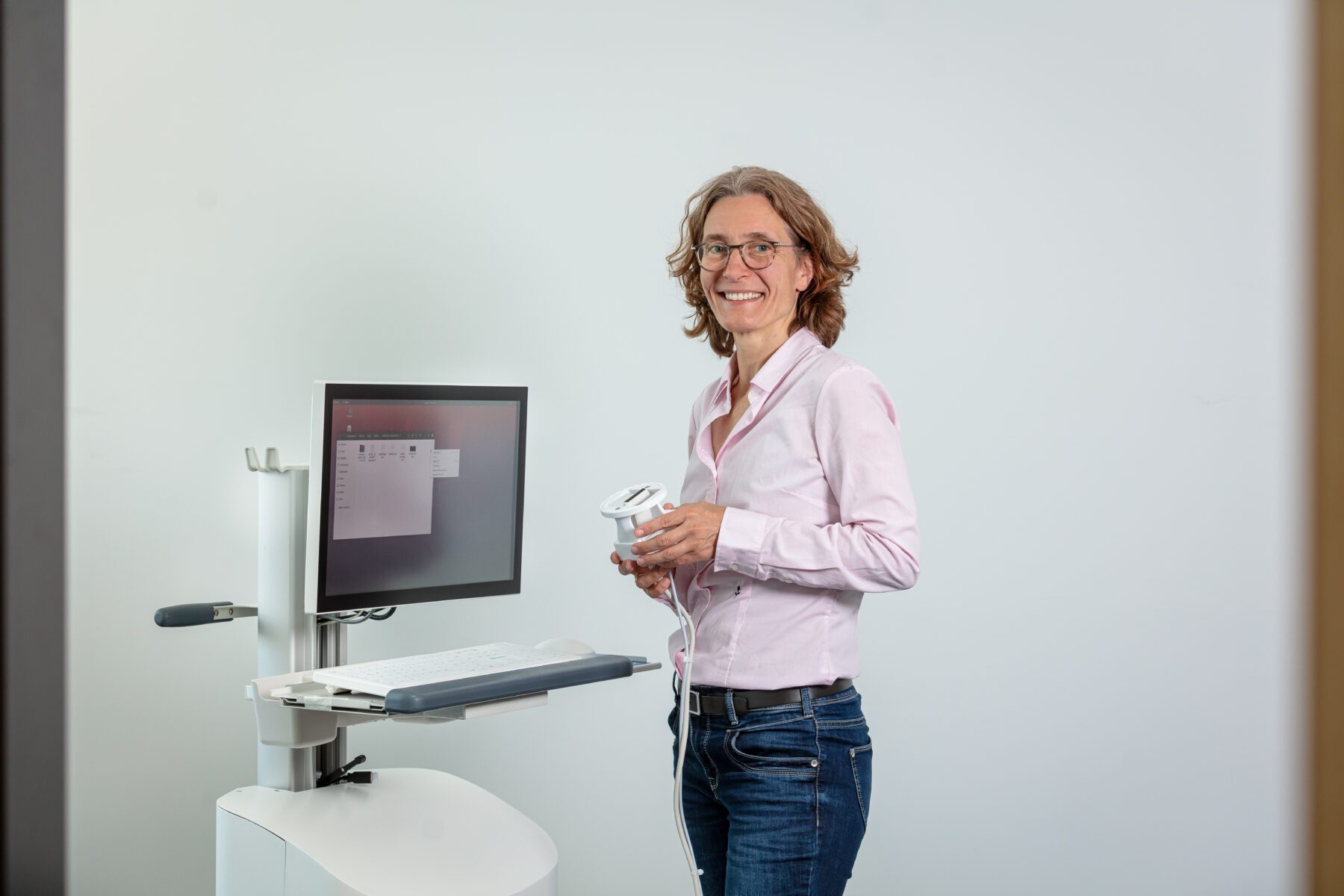
Science Park Ambassador Dr-Ing. Julia Eschenbrenner – »A Protected Space to Realise Ideas«
Julia Eschenbrenner and her team want to prevent millions of bone fractures with a new method for the early detection of osteoporosis. She is working towards this ambitious goal with the start-up POROUS at the Potsdam Science Park.
The best ideas are always those that solve urgent problems, Julia Eschenbrenner is convinced. With the start-up POROUS, which she runs, she wants to take the fear out of the widespread disease osteoporosis. Osteoporosis causes up to 800,000 bone fractures every year in Germany alone. Over time, the bones lose mass and density and become brittle – meaning that even a minor fall is enough to cause a complicated fracture. Women from the menopause onwards are particularly affected by bone loss, men about ten years later. The consequences are enormous costs for the healthcare system – and a lot of suffering.
»It wouldn’t have to be like this if we recognised osteoporosis earlier so that we could prevent it and treat it in good time,« says Julia Eschenbrenner. »Effective therapies and preventive programmes already exist. However, we cannot completely prevent bone loss, as it is an age-related process, but we can effectively prevent osteoporotic fractures.«
The method developed by the start-up POROUS at the GO:IN innovation centre in Potsdam Science Park has the potential to revolutionise osteoporosis diagnostics. Until now, this has been based on a bone density measurement using X-rays – the so-called DXA measurement. However, this does not always reliably recognise the risk of an osteoporotic fragility fracture. In addition, it is only covered by health insurance from the age of 70, and for men only from the age of 80 – unless there is a high risk of fracture, for example after an osteoporotic fracture.
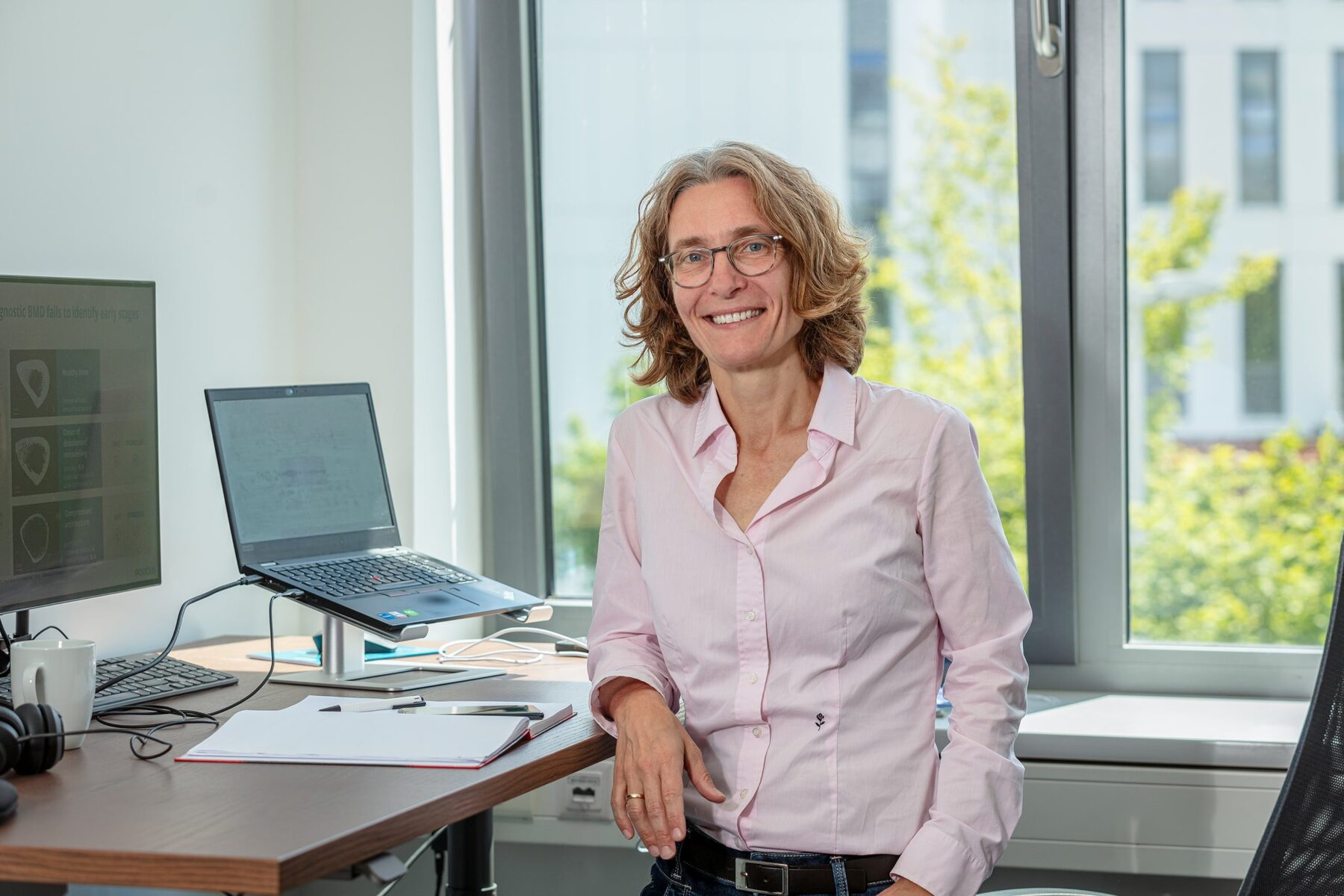
POROUS uses harmless ultrasound waves and a patented algorithm-based evaluation of the measurement data for its innovative diagnostic procedure. The technology was invented by physicist Professor Kay Raum at Charité University Medicine in Berlin in 2017. In a pilot study, it proved to be a third more precise than the DXA measurement.
»We are conducting a large multinational study for further clinical validation,« says Eschenbrenner. If the results of the pilot study are confirmed, nothing stands in the way of approval as a new diagnostic procedure. Doctors would then be able to determine the structure and thickness of the bone cortex, which is representative of bone health in the entire body, by means of a simple measurement on the tibia.
POROUS was founded in 2021 in the Potsdam Science Park with funding from the state of Brandenburg. »We have found a basis here on which we can grow well,« says Eschenbrenner. »The personal support and affordable rent in the innovation centre helped us a lot in the initial phase.« The Potsdam Science Park has now become a small home for Eschenbrenner’s team. »It is a protected space in which we can realise our ideas and concentrate on working towards our goal,« she says. The Golm site management also provides attractive offers for the now ten employees. »There’s a lot that we wouldn’t otherwise be able to offer them as a small company, whether it’s first aid training, professional training or sports courses.«
»There is a critical mass of research-related companies in the Potsdam Science Park, which facilitates fruitful dialogue on topics that affect all companies in the start-up phase.«
This has created a network in which people can help each other out with tools and tips. In addition, the academic environment with the University of Potsdam and the research institutes offers plenty of inspiration. »Every year, the PSP Conference shows how application-oriented many research questions are here,” she says. “It can quickly spark a new idea or a new collaborative project.«
Before her time at POROUS, Eschenbrenner, who studied biotechnology and patent law herself, supported over 100 invention ideas at Charité and other research institutes and helped many of them get off to a successful start. »I see it as my responsibility to advance transferable research for the benefit of society« she says. With her move to POROUS and Golm, she is now putting all her energy into a particularly promising idea that she learnt about at Charité.
»Very interesting minds are growing up in the Potsdam Science Park who can take their ideas out into the world. The location offers them all the necessary success factors for the transfer of good ideas into society.« For Eschenbrenner, one of the great strengths of the Potsdam Science Park is the people who learn and research here. »Very interesting minds are growing up here who can take their ideas out into the world,« says Eschenbrenner.
»The Potsdam Science Park offers the necessary success factors for innovation: Space for development, exchange and, with the Golm location management, a supportive and motivating force for spin-offs.«
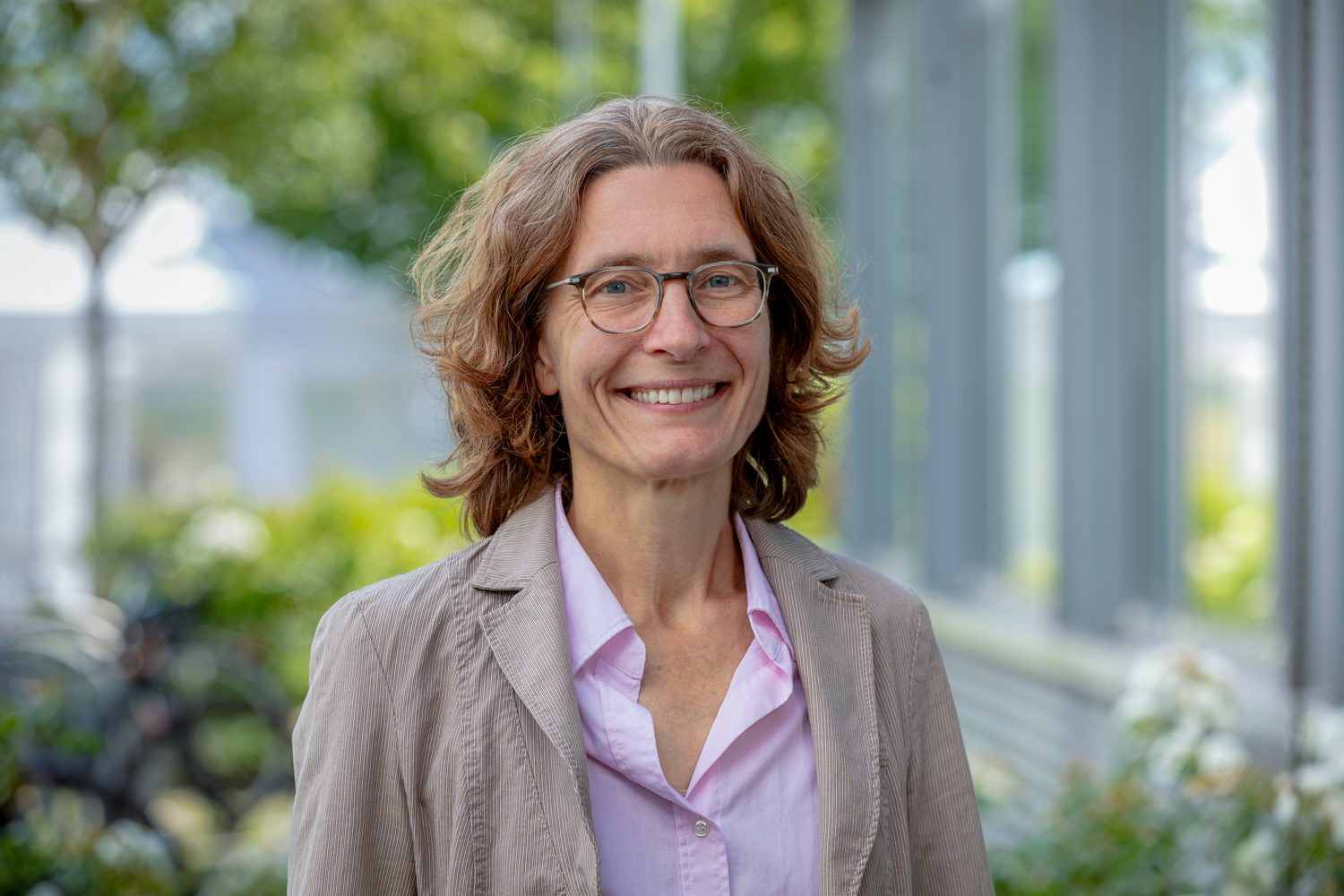
Vita Dr Julia Eschenbrenner
The POROUS method could not only revolutionise the diagnosis of osteoporosis in the future, it could also improve prevention. »Our long-term goal is a regular screening programme to check bone health at an early stage,« she explains. This is ambitious, but Eschenbrenner is confident that it can be achieved. »In future, I hope that every woman from midlife onwards will go to the gynaecologist once a year and have a bone ultrasound scan as part of the usual check-up.« Men could also take advantage of this low-threshold service in good time.
The POROUS method would also lead to greater fairness in the healthcare system. This is because the affordable and easy-to-use technology would enable doctors to keep a better eye on women-specific risk factors. »That would help many women,« says Eschenbrenner. After all, anyone who is informed early enough about their own risk of osteoporosis can take action in a timely manner and do something good for their body to avoid the worst. She herself has long since started to eat healthily and exercise, in particular muscle training, which stimulates bone formation. »My dream is that in future we will prioritise prevention and no longer therapy – that would be very possible with osteoporosis.«
The projects carried out by Standortmanagement Golm GmbH at Potsdam Science Park are funded by the European Union and the Federal State of Brandenburg.
Text: Mirco Lomoth | Photography sevens[+]maltry
Contact
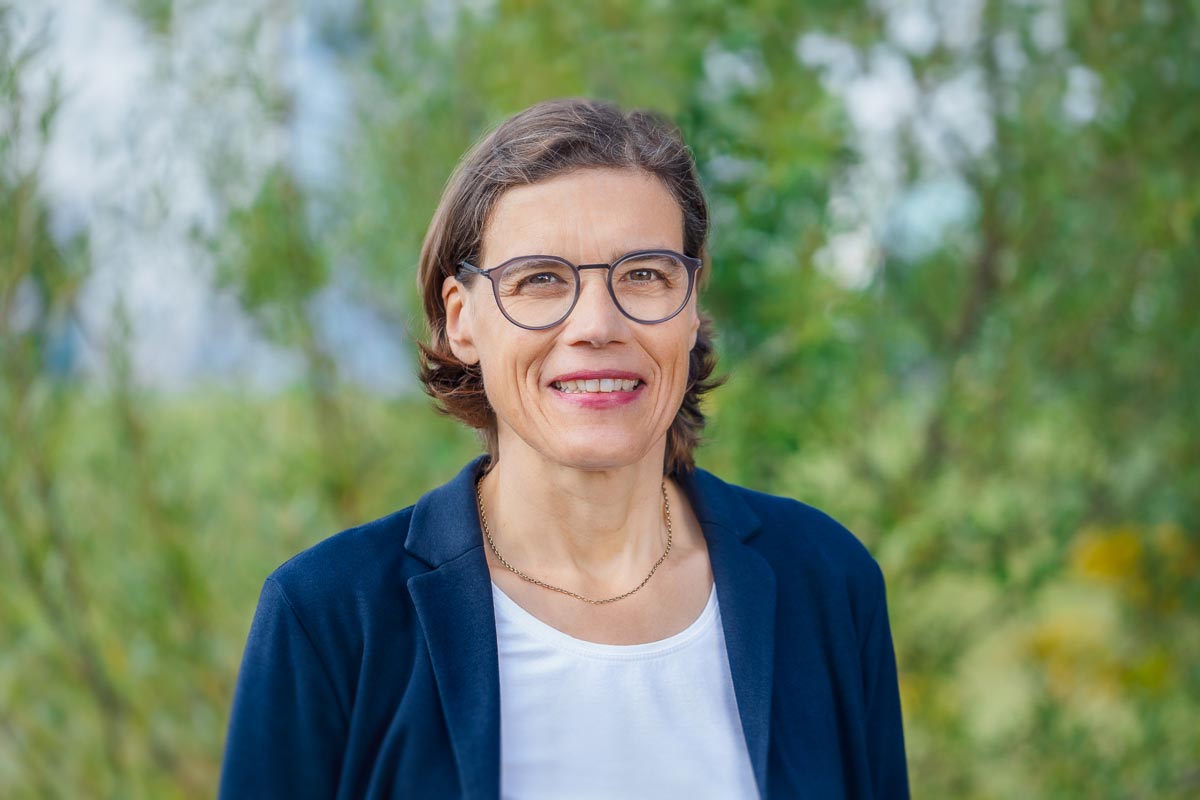
Agnes von Matuschka
Managing Director
agnes.matuschka@potsdam-sciencepark.de +49 331 237 351 135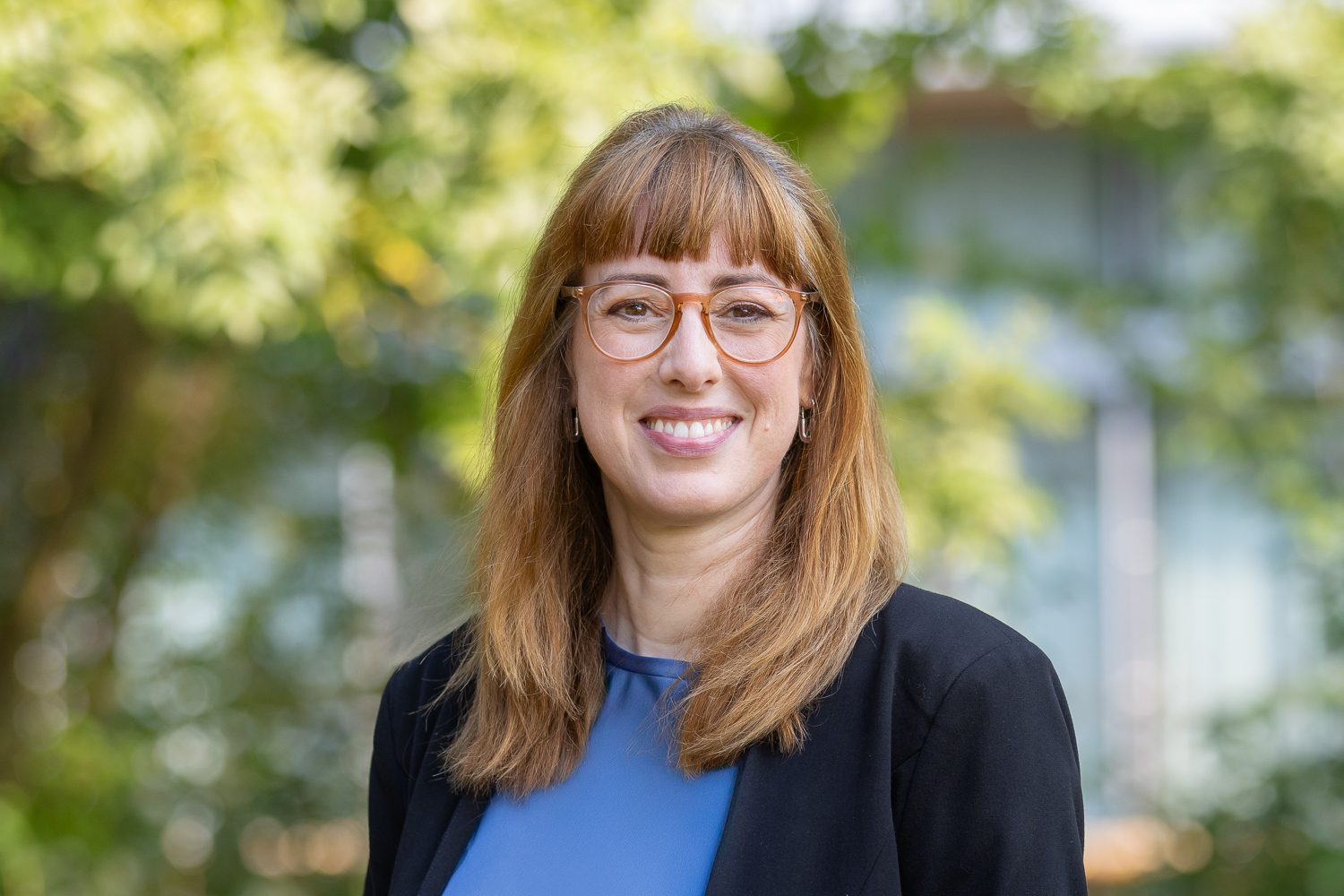
Karen Esser
PR & Communications
karen.esser@potsdam-sciencepark.de + 49 331 237 351 103